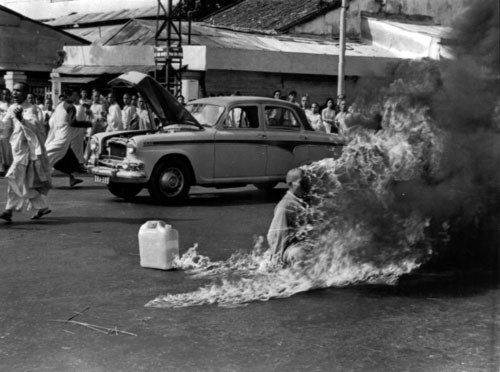Paul McCarthy's Low Life Slow Life
dal 6/2/2008 al 11/4/2008
Segnalato da
Paul McCarthy
John Altoon
Bob Arentz
Joseph Beuys
Stan Brakhage
Malcolm W. Browne
John Cage
Christo and Jeanne-Claude
Bruce Conner
Paul Cotton
Jay DeFeo
Marcel Duchamp
John Heartfield
Wally Hedrick
Mike Henderson
Allan Kaprow
Yves Klein
Tetsumi Kudo
Yayoi Kusama
Robert Mallary
Gustav Metzger
Allan Midgette
Henry Moore
Saburo Murakami
Bruce Nauman
Yoko Ono
Al Payne
Raivo Puusemp
Kazuo Shiraga
Tony Smith
Karlheinz Stockhausen
Stan VanDerBeek
Irby Walton
Andy Warhol
Jens Hoffmann
Stacen Berg
6/2/2008
Paul McCarthy's Low Life Slow Life
CCA Wattis Institute for Contemporary Arts, San Francisco
This is the first half of an evolving exhibition presenting sculpture, photography, painting, installation, drawing, performance, video, music, magazines, books, images, memorabilia, documents, and films. It showcases a wide range of artists and artworks related to McCarthy's memories from his career, as well as a number of his own works. This first part investigates the artist's student years in Salt Lake City in the 1960s and his early career in the Bay Area during the 1970s.

curated by Paul McCarthy
Paul McCarthy's Low Life Slow Life: Part 1 is the first half of an evolving, two-part exhibition presenting sculpture, photography, painting, installation, drawing, performance, video, music, magazines, books, images, memorabilia, documents, and films.
PARTICIPATING ARTISTS: John Altoon, Bob Arentz, Joseph Beuys, Stan Brakhage, Malcolm W. Browne, John Cage, Christo and Jeanne-Claude, Bruce Conner, Paul Cotton, Jay DeFeo, Marcel Duchamp, John Heartfield, Wally Hedrick, Mike Henderson, Allan Kaprow, Yves Klein, Tetsumi Kudo, Yayoi Kusama, Robert Mallary, Paul McCarthy, Gustav Metzger, Allan Midgette, Henry Moore, Saburo Murakami, Bruce Nauman, Yoko Ono, Al Payne, Raivo Puusemp, Kazuo Shiraga, Tony Smith, Karlheinz Stockhausen, Stan VanDerBeek, Irby Walton, Andy Warhol
The CCA Wattis Institute for Contemporary Arts will present the exhibition Paul McCarthy's Low Life Slow Life: Part 1 from February 7 to April 5, 2008, in the lower-level Logan Galleries on the San Francisco campus of California College of the Arts. This is the first solo project in San Francisco by the acclaimed Los Angeles–based artist. The exhibition is free and open to the public, with an opening reception on Thursday, February 7, from 6–8 p.m.
McCarthy's two-part exhibition will showcase not only a number of his own works but also a diverse range of artists and artworks related to his memories from his career. This first part will focus on his student years in Salt Lake City in the late 1960s and his early career in the Bay Area during the 1970s. Paul McCarthy's Low Life Slow Life: Part 2, to be presented in 2009, will focus on his years in Los Angeles and map out the period from the mid-1970s to the present.
McCarthy's curatorial selections are eccentric and unconventional, deriving more from his personal recollections than from any historical, objective measure of artistic influence. The works on display will range from sculptures to paintings, magazines, books, artifacts, memorabilia, films, videos, photographs, installations, and even reproductions and remakes of artworks that no longer exist or that McCarthy only ever encountered as reproductions. The featured artists will include such established figures as Henry Moore and Joseph Beuys and more obscure artists such as Wally Hedricks and Al Payne.
The exhibition will continuously change and transform during its course. The works will be grouped into clusters, enabling visitors to trace a dialogue among McCarthy's own pieces, works by other artists, McCarthy's numerous art-historical and aesthetic references, and his personal art history and philosophy. He will also present a number of "spin-off" exhibitions that will look at, for instance, the role of Christmas trees or mirrors in contemporary art.
Although McCarthy did not achieve international recognition until the 1990s, he has been an influential figure on Los Angeles's art scene for almost 30 years. His early performance work of the 1970s explored the body and sexuality. The intensity of these performances, which often included graphic depictions of taboo subjects, eventually led him to further explorations and exploitations of video and film, special effects, and large-scale installations as he continually strove to heighten the effect of his work. Today McCarthy is considered one of the most influential living American artists.
About Paul McCarthy
Paul McCarthy was born in Salt Lake City in 1945 and currently lives and works in Los Angeles. He studied as an undergraduate at the University of Utah and the San Francisco Art Institute, and he holds an MFA from the University of Southern California. His artwork has been featured in museums around the world; he has had recent solo exhibitions at the Moderna Museet in Stockholm, Tate Modern in London, and the New Museum of Contemporary Art in New York, and he has been included in recent group exhibitions at the Centre Pompidou in Paris, the Institute of Contemporary Arts in London, and the Whitney Museum of American Art in New York.
LECTURE BY PAUL McCARTHY: Tuesday, February 12, 7 p.m.
FILM SCREENINGS: An extensive film program will accompany the exhibition, including films by Stan Brakhage, Bruce Nauman, Bruce Conner, Yayoi Kusama, Yoko Ono, Stan VanDerBeek, and Andy Warhol.
The lecture and film screenings take place in Timken Lecture Hall, California College of the Arts, 1111 Eighth Street (at 16th and Wisconsin), San Francisco CA 94107. All events are free and open to the public.
Paul McCarthy's Low Life Slow Life is curated by Paul McCarthy and organized by Jens Hoffmann, director of the CCA Wattis Institute, and Stacen Berg, assistant curator of the CCA Wattis Institute.
Image: Malcolm Browne, Quang Duc, a Buddhist monk, burns himself to death on a Saigon street June 11, 1963 to protest alleged persecution of Buddhists by the South Vietnamese government, 1963. © AP images
Opening february 7, 2008
CCA Wattis Institute for Contemporary Arts
1111 Eighth Street - San Francisco



